Main Menu

M.1910, M.1915 oder M.1917 Kochgeschirr
(Individual Mess Kit)
Soldiers had to be able to cook their food during periods of rest and lightweight individual boilers were issued in most European countries, although France, Austria and Norway were using larger collective boilers. The disadvantages were that if the soldier carrying the larger boiler got lost, a small group of soldiers had no cooking boiler to use.
The Kochgeschirr, which was used prior to 1910, was made of aluminum and had a capacity of 2 1/2 liters. It was blackened for foot troops and left in aluminum finish for mounted units. The handle could be attached or detached from the lid of the canteen. Detached, it was carried in the backpack. It contained an opening to insert a wooden stick in case the handle became too hot when the contents were heated. The weight of the canteen was 380g for foot troops and 400g for mounted troops who had a version made of thicker aluminum. Markings on the outside/inside of the mess kit divide it into five sections of 1/2 liters. The Kochgeschirr was always carried attached to the backpack.
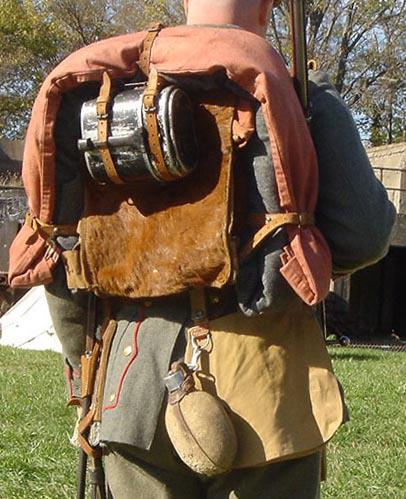
The M.1910 Kochsgeschirr as carried on the M.1895 Tornister
In January 1910, the Prussian War Ministry decided to adopt a new model for dismounted troops. Mounted troops were still to use the old model. This new model was reduced in size and could only contain 2 liters. The lid measured 2.1" (5.8cm) in height, 6.7" (17cm) in length and was 4.1" (10.4cm) deep. It was found that the detachable handle on the previously used camp kettle was often lost therefore this new model had a lid handle permanently fixed. The fork and spoon combination, Eßbesteck, was stored inside the mess kit. This model of Kochgeschirr would be unpainted or blackened.
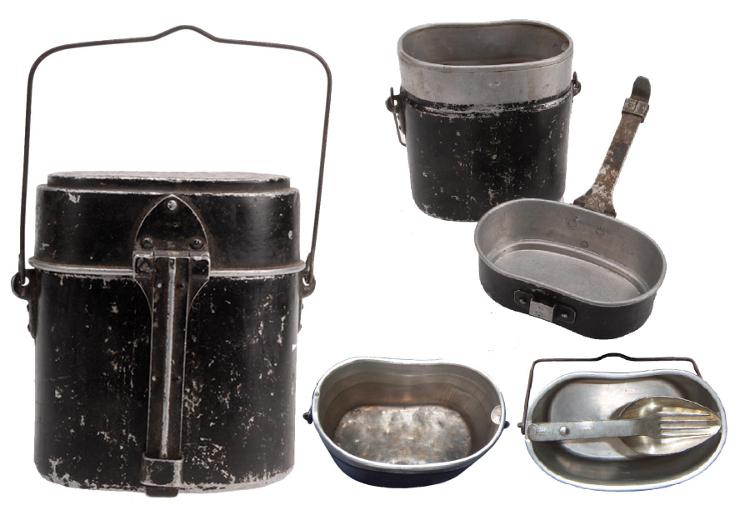
Images from Johan Somer's Imperial German Field Uniforms and Equipment 1907-1918
Above: Original aluminum M.1910 Kochsgeschirr
In January 1914, the Prussian War Ministry decided to adopt a new model for dismounted troops. Mounted troops were still to use the old model. This new model was reduced in size and could only contain 2 liters. The lid measured 2.1" (5.8cm) in height, 6.7" (17cm) in length and was 4.1" (10.4cm) deep and the lid handle was now permanently fixed. It was found that the detachable handle on the previously used camp kettle was often lost. The fork and spoon combination, Eßbesteck, was stored inside the mess kit. These could be unpainted or blackened.
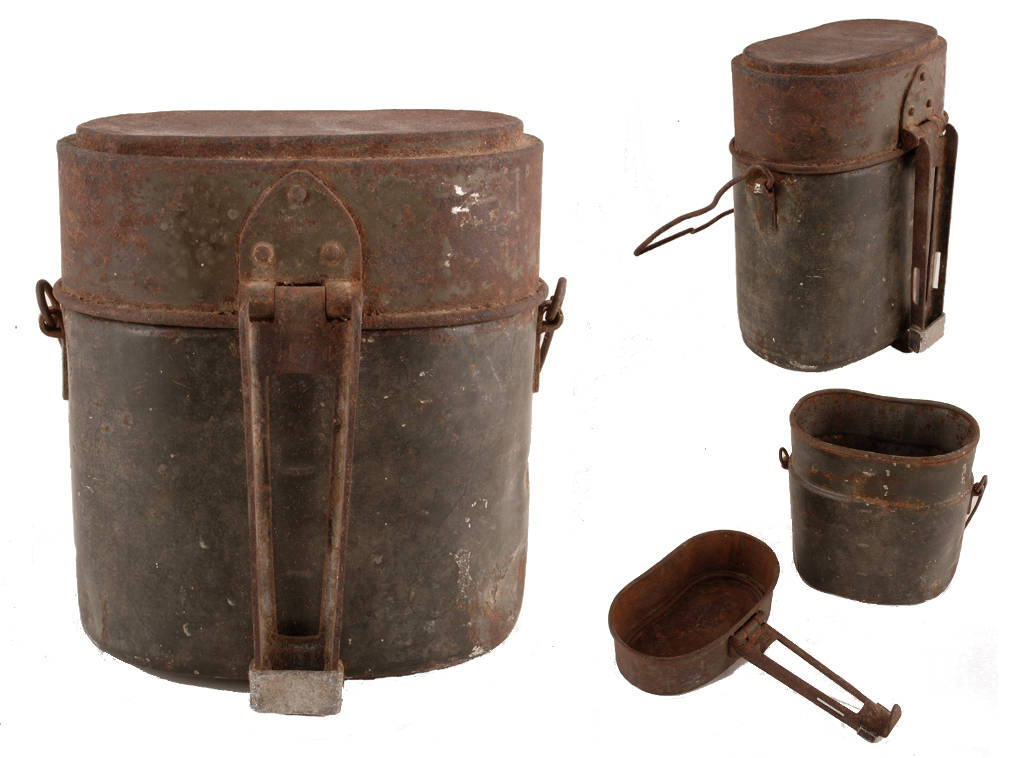
Above: Original tin-plated and painted M.1914 Kochsgeschirr
The mess kit was attached on the backpack or, when no backpack was worn, often between the folded tent shelter during the later part of the war.
In 1915 the Kochsgeschirr was supplied with field-grey matte paint and was made from sheet metal Weissblech (tin-plated sheet iron) or Stahlbelch (tin-plated sheet steel) instead of aluminum, which was becoming more and more scarce. Other wartime kettles could be made from double-plated Stahlblech with a field-grey exterior finish, an enameled finish interior and exterior, a tinned finish interior and enameled finish exterior, or a tinned finish exterior and painted exterior. The handle was simplified by changing its form from a T cross section to a flat shape, thus eliminating the reinforcement. This model was not only issued to foot troops, but also saw its introduction for the first time to mounted units.
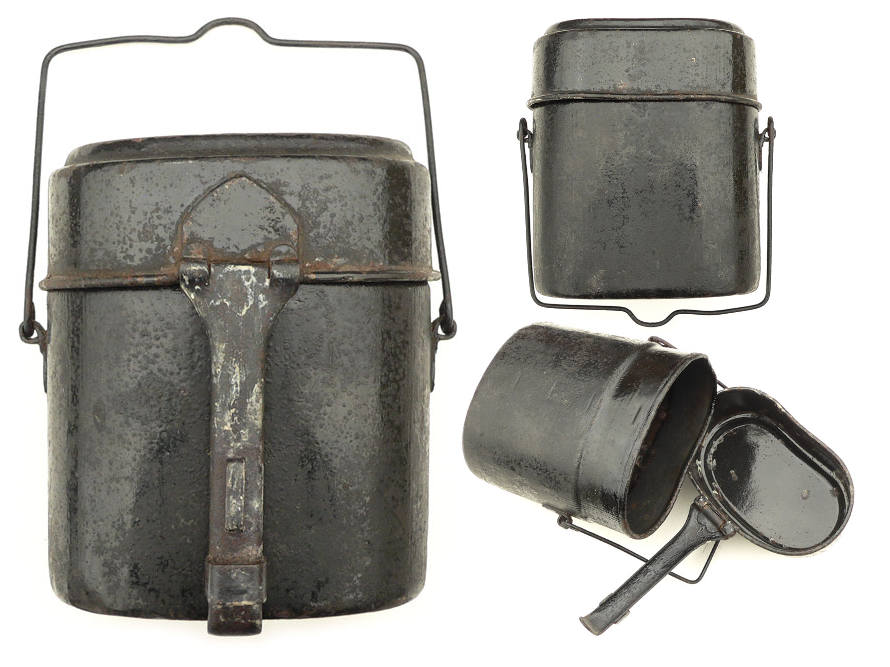
Above: Original enameled M.1915 Kochsgeschirr
A last change was finally introduced during 1917. The point of the triangular plate attached to the lid, used to pivot the lid handle was bent upwards, thus providing a better means to fix the Kochsgeschirr with leather straps Kochgeschirrriemen to the backpack. These straps were 0.7" (1 .8cm) in width and 21.6" (55cm) long.
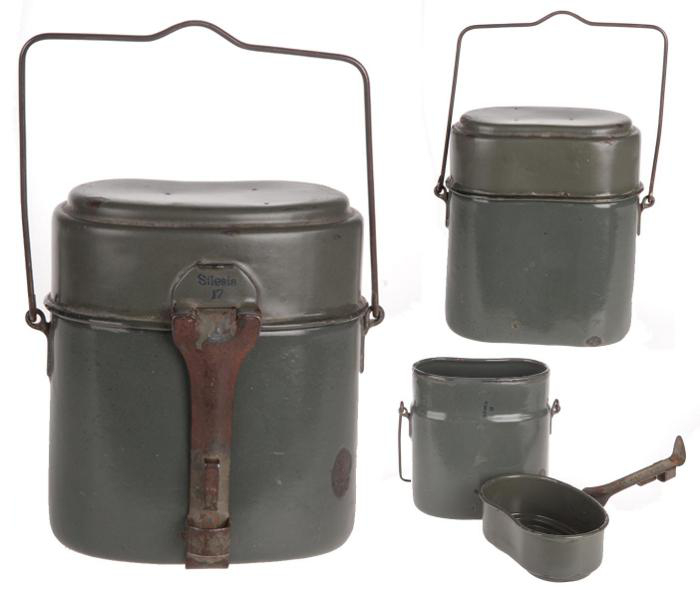
Original M.1915/17 enameled steel Kochsgeschirr